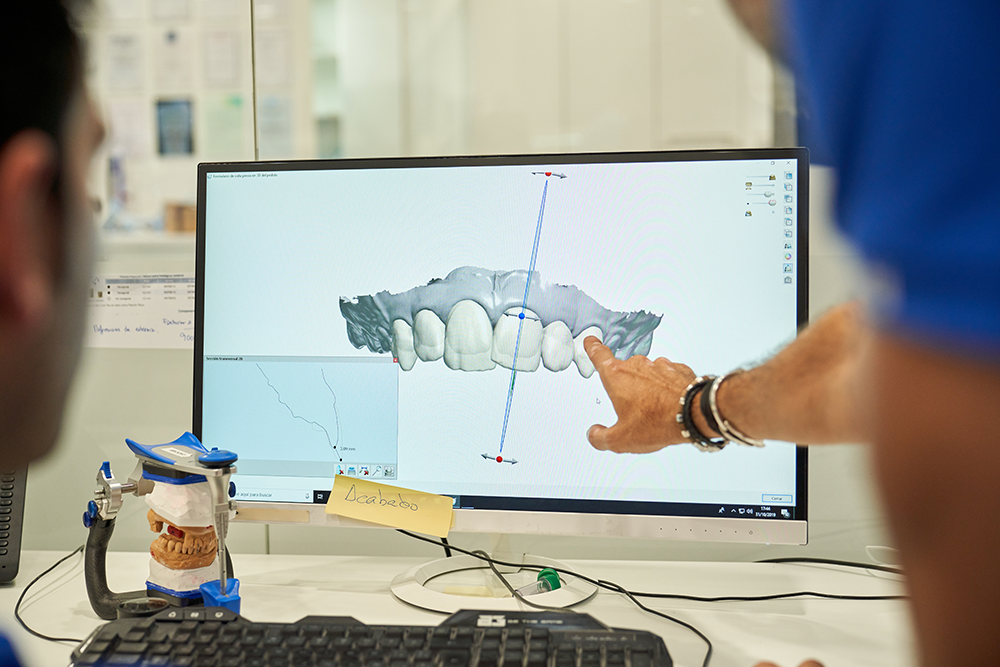
The Transition to Digital Dentistry Part 2
When my daughter Kaitlyn (currently in through E2 at Pankey) finished dental school in 2020, I strongly recommended that she learn analog first, then once mastered, make the transition to digital. This lasted about four months. I learned rapidly that this generation sees things in the digital realm far better than we do. She reminded me that “she grew up with a screen in her hand.”
We began to focus on her learning the concepts of occlusion, esthetics, biology, tooth-by-tooth structural integrity, and visualizing and planning in the virtual (digital world). We quickly learned that, although she could easily visualize things on the computer, the patient is ultimately analog. We began to utilize an analog articulator for her to learn the hand skills of what we would do on the patient.
A great example of this is equilibration. A “trial equilibration” on a virtual articulator is a 5-minute process that lets us determine if equilibration is an appropriate treatment option. The problem is that, unlike analog, you do not learn the brush strokes that will be required to perform this skill in the mouth. I have performed hundreds if not thousands of equilibrations. I know the brush strokes. For me, once I see on the virtual articulator that I can do the equilibration without too much tooth structure removal, I am ready to go to the mouth. For Kaitlyn, who has very limited equilibration experience, once visualized on the virtual articulator, then it’s time to go back to analog. She mounts the printed models on an analog articulator to perform a traditional trial equilibration. In this way, she learns the brushstrokes of this incredibly important procedure.
I think it is extremely important that dentists, who are learning to equilibrate intraorally, work on mounted analog models to develop their equilibration skills.
Returning to the consideration of the financial cost of bringing new technology into your practice—input devices (scanners and CBCTs), output devices (printers and mills), and software to manipulate the data all cost money. Doctors that are going down this road usually like technology and consider the dramatic increases in efficiency to ultimately increase the productivity and profitability of the practice. This is certainly something I have seen. The bottom line is dental stone will go away. We all must make the decision when it is appropriate to make the jump.
Dr. Lee Ann Brady has invited me to audit all the Pankey Essentials courses over the next year. I am super excited about this. She has asked me to recommend ways to appropriately implement examples of digital technologies and workflows into these core classes. While younger dentists are drawn to digital information, it is important for us to remind them that our patients are ANALOG. We are training dentists to perform complex procedures on patients, not on computers. This requires great study and a commitment to understand timeless concepts, while simultaneously developing the hand skills to accomplish these procedures accurately and use digital workflows to make things more efficient.
In 2024, The Pankey Institute is also implementing a digital hands-on course for those doctors who would like to make the transition over to virtual articulation and digital workflows—something that I am excited to be part of. Dentistry is in a great transition. I look forward to making sure the concepts that we have all built our practices around do not get lost in the digital world.







